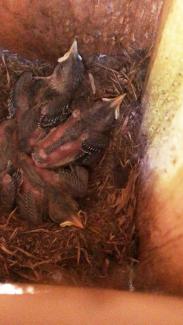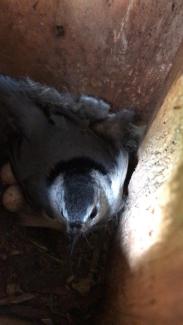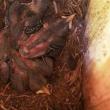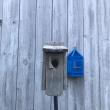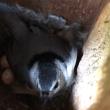Hatching Nuthatches: An egg to fledgling journey
White-Breasted Nuthatches are one of my favorite birds, mostly because they’re fun to watch. Nuthatches are one of the few kinds of birds that can climb up and down trees, making them easily identifiable. The other bird that does this is a Brown Creeper.
When a White-Breasted Nuthatch gets something it wants to store away, such as a sunflower seed or peanut, it will hammer it into the trunk of a tree, saving it for later. Now that you know a little about White-Breasted Nuthatches, let’s learn about their nesting behaviors and see some cute pictures of eggs and babies!
\The nuthatches I am tracking began checking out the nest box I had put up around the beginning of May. They quickly built the nest, and the first egg was laid on May 14. They went on to lay a total of 6 eggs, with the last egg laid on May 19. Nuthatches typically lay 5-9 eggs, and will only nest in a cavity. Unlike Red-Breasted Nuthatches, they rarely excavate their own cavity, which makes them prime buyers for a nest box.
The first egg is estimated to have hatched on June 3, which is the first day I actually saw the babies. Unfortunately, two of the six eggs did not hatch, and never will. As a result, the nest, in the best case, can only produce four fledglings (birds that leave the nest). Today, June 14, I saw some significant feather growth on the hatchlings, and am optimistic about their future! They are scheduled to leave the nest around June 29.
I am tracking all of this information in NestWatch, which is run by the Cornell Lab of Ornithology. You can sign up for free and track nests year after year to compare data. Here is the link: https://nestwatch.org. They use your data to complete studies and gather information about your nesting birds. I strongly recommend checking out their website, even if you don’t sign up. They also have nest box plans for many cavity-nesting species. If you find nesting birds, please minimize disturbance to the nest and act in the best interest of yourself and the birds!
United States



